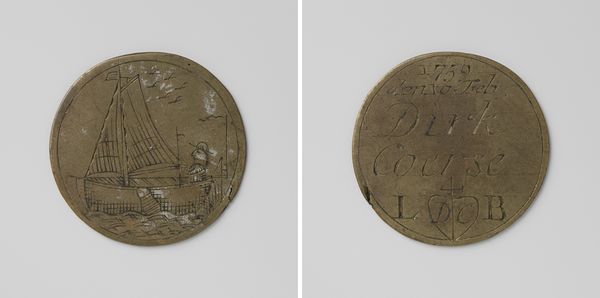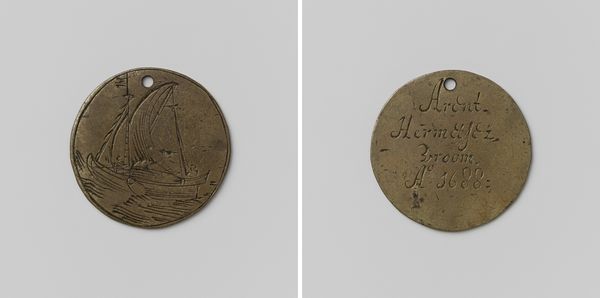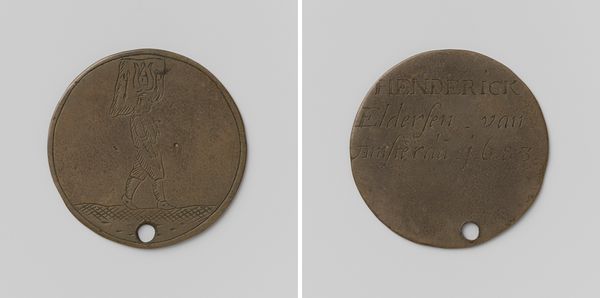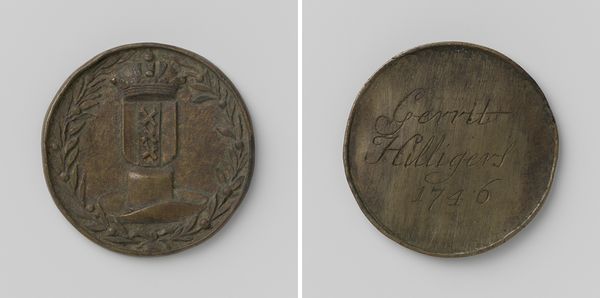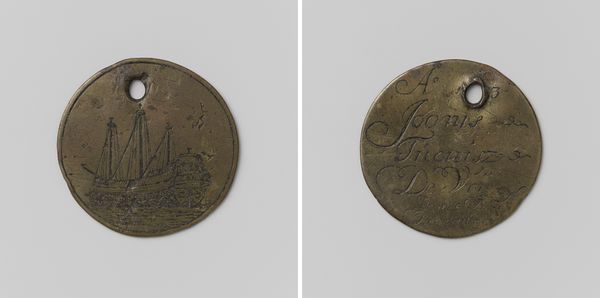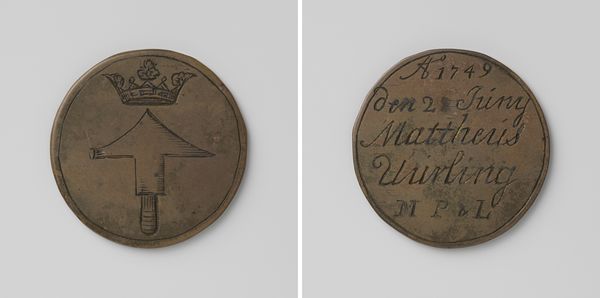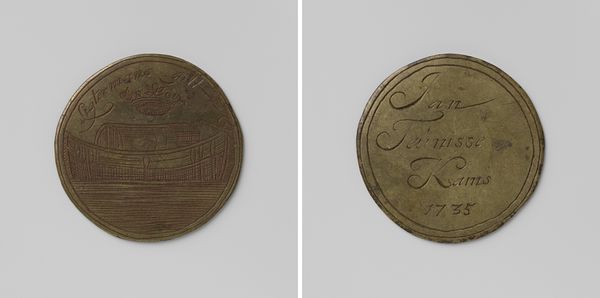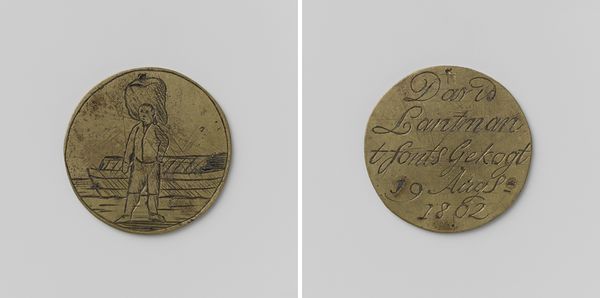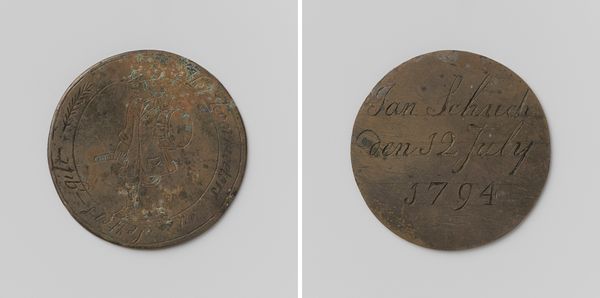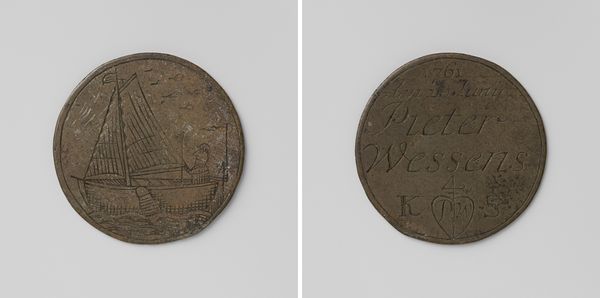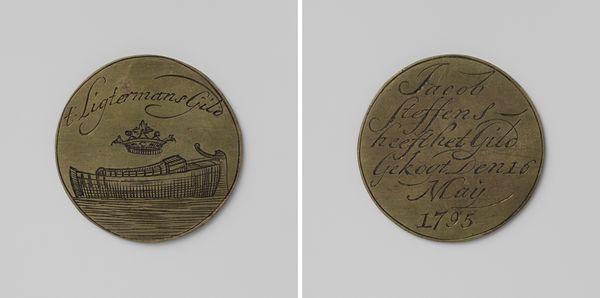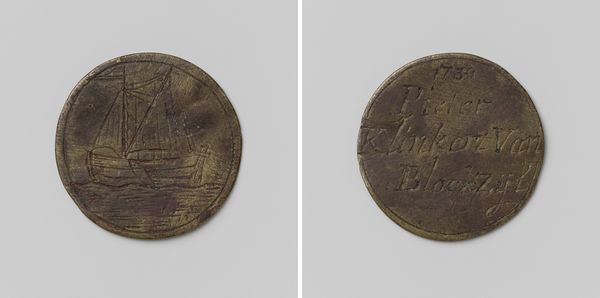
Dimensions: diameter 4 cm, weight 9.13 gr
Copyright: Rijks Museum: Open Domain
Curator: Well, this looks like a somber little disc, almost a memorial. Editor: This is the guild badge of Pieter Pouwels Harmanus, dating back to 1811. It’s made of metal and presented in relief and engraving and belongs to the Amsterdam grain millers' guild. Curator: Guild badges as forms of artistic expression and group identity markers have always interested me. What material would that be, bronze perhaps? And look at the fineness of the engraving; someone truly mastered their craft. Consider the labor embedded in the process; who was producing the bronze and did this guild master produce these himself or contract a master craftsman for the making? Editor: Precisely! Guild membership was closely regulated, deeply tied to both economics and social standing. Such tokens were not merely decorations. Think about the symbolism too, right? A visual declaration of belonging, conferring status and potentially influence within the community. The imagery, specifically a windmill, becomes a symbol of this trade and economic life. Curator: The use of the windmill image provides the narrative structure of this artifact. Did each guild have such markers of production? Editor: Definitely, each guild would usually have these markers and they served purposes such as quality control, social cohesion and even economic strategy. It also indicates how crucial these guilds were within society, as a powerful cultural element, influencing identity, power, and economics. Curator: Fascinating, so each token tells a rich, specific story through both the choice of medium and the imagery embossed within it. Something tangible speaking of less tangible connections. Editor: Absolutely, I’ll never look at everyday objects the same way again! Thank you!
Comments
No comments
Be the first to comment and join the conversation on the ultimate creative platform.

